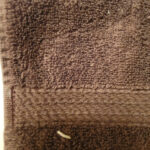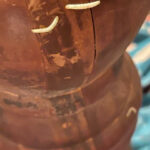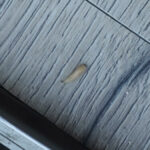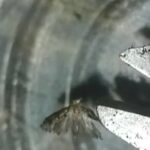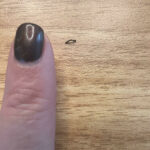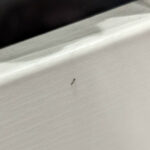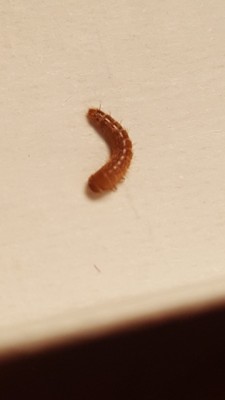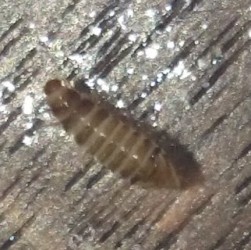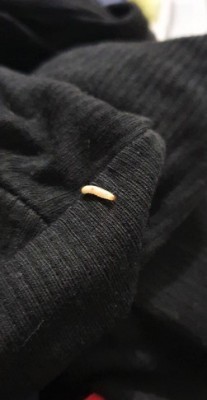
“Please help!” this reader exclaims about the white, larva-looking creature pictured below. “I found these between my clothes that were in the basement” he states, before asking us what he should do about his situation.
Our reader sent us two photographs of identical looking larvae, but we have only included one as the second was of a poorer resolution and did not yield any new information as the larvae are identical, as was the location of discovery. The larvae our reader found between his clothes are clearly clothes moth larvae. Clothes moth larvae are very destructive, but common, household pests that feed on clothing, carpets, upholstery, and any other materials that are even partially animal-based in their production. There are two common species of clothes moths, the webbing clothes moth and the casemaking clothes moth, both of which birth larvae that are equally destructive. Out of the two, our best guess is that the ones our reader found are webbing clothes moth larvae, only because if they were casemaking clothes moth larvae they would likely be dragging a silken tube case around with them, which our reader would have noticed. On that note, webbing clothes moth larvae do leave behind their own detritus. As their name suggests, these critters can leave behind small patches of silk webbing, but they can also leave behind faecal pellets and of course, holes in the materials they have been eating.
What our reader should do first is vacuum up any larvae and eggs he finds around the area he stores the infested clothing. In fact, he will probably want to vacuum up the entire basement, or even the entire house, as the infestation may have spread. However, assuming this is indeed an infestation, we are guessing that its source is the clothing in which our reader found the larvae. Whether or not he vacuums the rest of the house can be decided by a thorough search for any more roaming larvae around the home. He will want to vacuum repeatedly a few days a week for two-to-three weeks to ensure the elimination of any larvae and eggs, especially because the eggs can be tricky to see with the naked eye. Simultaneously, our reader will want to launder any of the clothes he found the larvae roaming on, as well as any other clothes he owns that are animal-based (and even partially so). Prevention of future infestations entails simply keeping the moths out of one’s space. Ensuring the quality and durability of window screens, sealing cracks in walling and flooring where possible and not leaving doors open for long periods of time all help to prevent moths — and plenty of other critters — from flying into one’s home.
To conclude, the creatures our reader found between his clothes are clothes moth larvae, and most likely webbing clothes moth larvae. Regardless of the species, the method for controlling and eliminating a clothes moth larvae infestation is the same and we hope that this article has proven useful to our reader. We likewise hope that he is free of these larvae soon! The best of luck to him.
All About Worms is always free, always reader-supported. Your tips via CashApp, Venmo, or Paypal are appreciated! Receipts will come from ISIPP Publishing.
You might also find these guys interesting!





